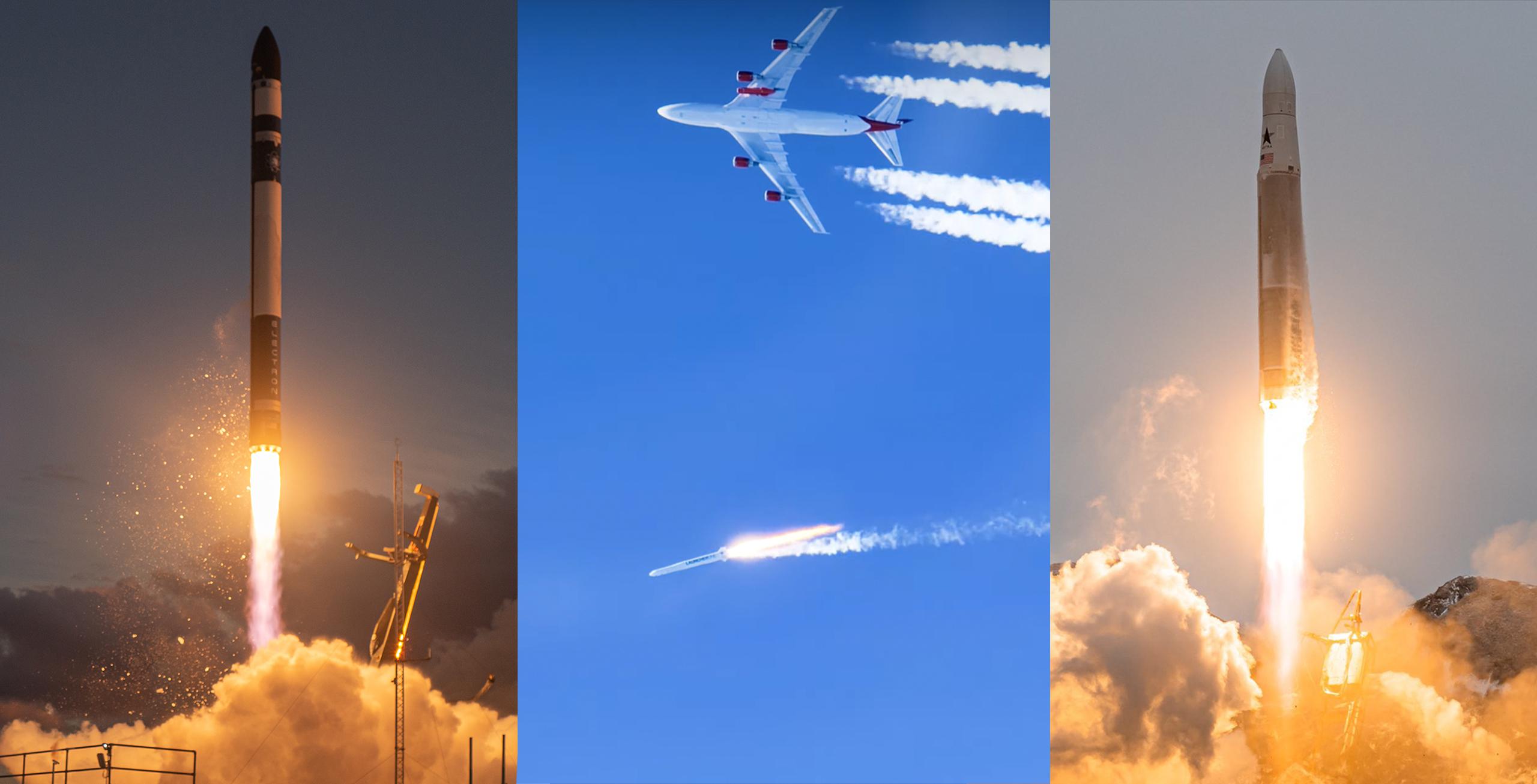
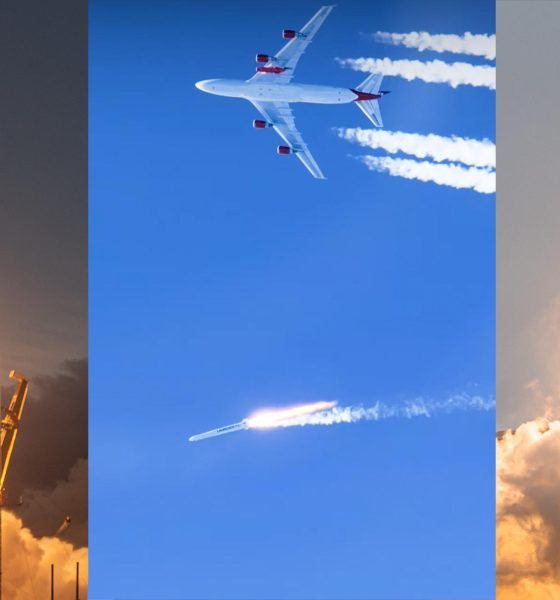
News
Rocket Lab, Virgin Orbit lead a new class of small rockets with big ambitions for 2021
SpaceX’s reign as the only privately funded American spaceflight company to reach and successfully deploy small satellite payloads into orbit ended on January 21, 2018, when Rocket Lab’s Electron rocket delivered three customer CubeSats to orbit for the first time.
SpaceX and Rocket Lab have since been the only private American companies to offer dedicated and rideshare delivery of small satellites to orbit. That is until Virgin Orbit joined the competition with the success of its Launch Demo 2 mission earlier this week.
Airdropping rockets
On Sunday, January 17, Virgin Orbit – one of two spaceflight companies backed by billionaire Richard Branson – joined SpaceX and Rocket Lab as the next private American rocket launcher sending small satellites to space. Virgin Orbit delivers its payload slightly differently than SpaceX and Rocket Lab. Virgin Orbit can uniquely offer its customers the flexibility of launch site because its liquid-fueled rocket is dropped mid-air from under the wing of a massive Boeing 747 before propelling itself to space.
In the Spring of 2020 Virgin Orbit conducted its first Launch Demo mission off of the coast of southern California. Prior to the rocket’s first stage ignition, the company achieved the majority of its intended test flight targets. Just after LauncherOne’s first stage ignition the rocket prematurely shut down resulting in the complete loss of the rocket and its payload as it fell to the ocean.
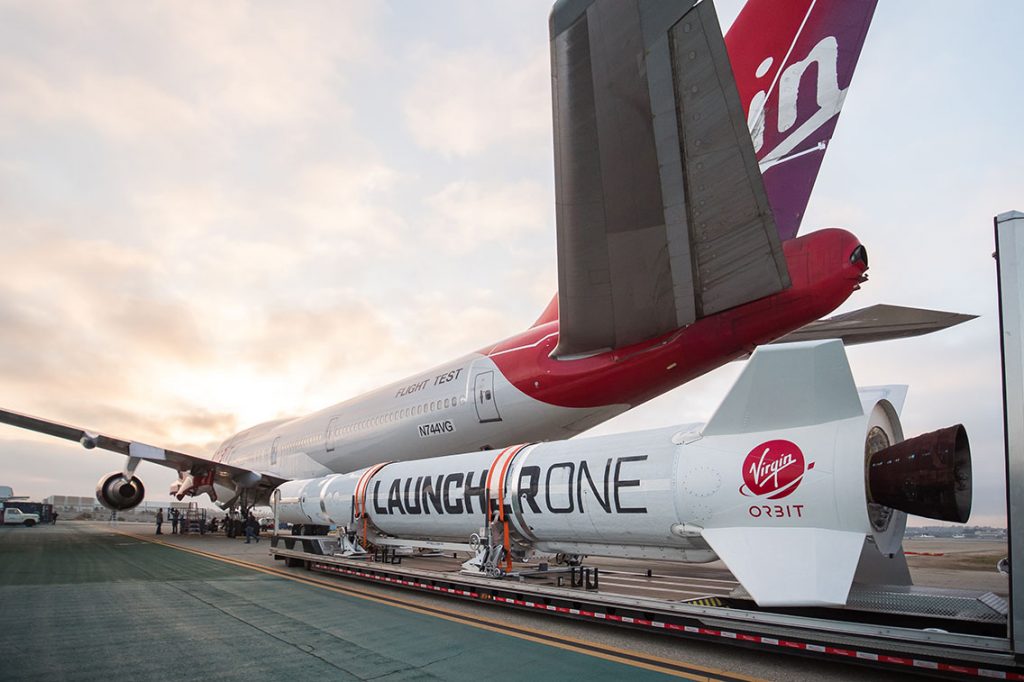
After months of investigation, Virgin Orbit attributed the prematurely terminated flight to a component failure that led to a breach of a high-pressure line starving the engine of Liquid Oxygen resulting in the immediate loss of propulsion. The issue was remedied quickly and Virgin Orbit aimed to fly and launch again in December 2020 for its Launch Demo 2 mission attempting to successfully achieve orbit by the close of the year. In mid-December, the launch date of Launch Demo 2 was postponed until January 2021 due to impacts to operation and scheduling caused by the Covid-19 pandemic.
Virgin Orbit’s 747, Cosmic Girl, piloted by Kelly Latimer took to the skies on Sunday, January 17 with a fully fueled LauncherOne rocket loaded with a payload of nine CubeSat missions made up of ten spacecraft for NASA’s Educational Launch of NanoSatellites (ELaNa XX) series contracted under NASA’s Venture Class Launch Services program.
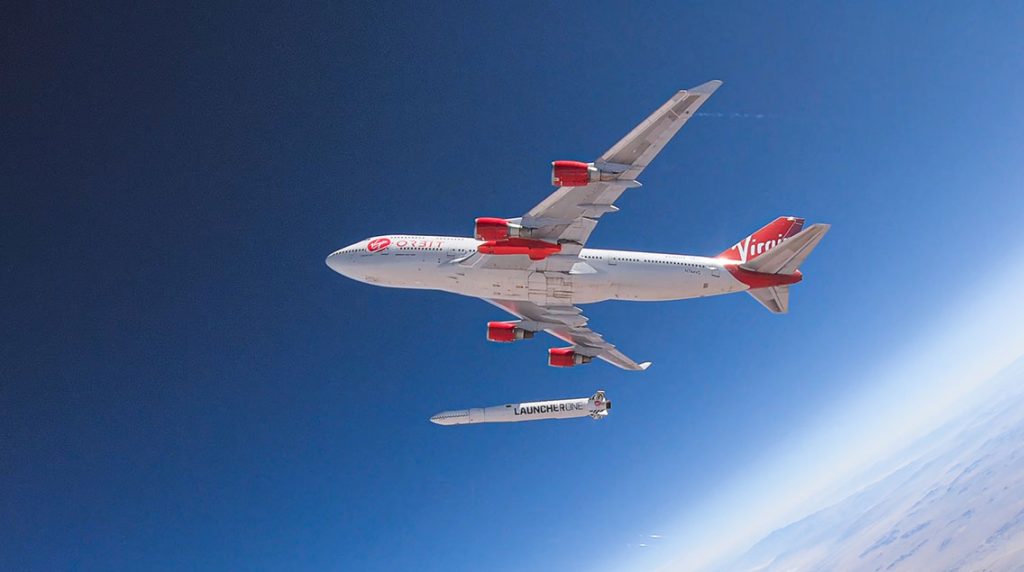
The Launch Demo 2 mission went off without a hitch. Just as with the first Launch Demo, all pre-launch activities proceeded nominally with Cosmic Girl reaching an altitude of 30,000 feet prior to the release of LauncherOne over the Pacific Ocean. Once released into free flight, the rocket’s first stage engine ignited and carried it through the atmosphere until separation and second stage engine ignition beyond the Kármán line – the recognized point at which “space” is defined beyond Earth’s atmosphere. Eventually, all nine payloads were successfully deployed into orbit completing the first-ever successful mission of an orbital class, liquid-fueled, air-launched rocket to reach space.
Another One Leaves The Crust
SpaceX has set the pace for space in 2021 successfully achieving two orbital-class launches within the first twenty days of the year with a third mission scheduled to depart Launch Complex 40 at Cape Canaveral Space Force Base in Florida on Friday, January 22. Likewise, Rocket Lab looks to aggressively exceed its previous launch record of seven missions in one calendar year. The only way to demolish a previous record is to launch frequently from multiple spaceports. SpaceX currently has three active launchpads, two in Florida and one in California. Within 2021, Rocket Lab will also have three operational launchpads, two in New Zealand and one in Virginia.
On Wednesday, January 20, 2021 – its third anniversary of first making it to orbit – Rocket Lab successfully launched its first Electron mission of 2021 nicknamed “Another One Leaves The Crust.” After standing down from a previous launch attempt on January 16 due to an erroneous sensor, the eighteenth overall mission of the Electron rocket successfully launched and deployed a single communications microsatellite for the European space technology company, OHB Group. The mission took place from Launch Complex 1 in Mahia, New Zealand at 07:26 UTC. This mission brings the total satellites deployed by Rocket Lab to 97.
In a statement provided by Rocket Lab, founder and CEO, Peter Beck, states that “We’re proud to be delivering a speedy and streamlined path to orbit for OHB Group on this mission, with launch taking place within six months of contract signing. By flying as a dedicated mission on Electron, OHB and their mission partners have control over launch timing, orbit, integration schedule, and other mission parameters.”
2021 – The year of the small satellite launcher
Expect SpaceX, Rocket Lab, and Virgin Orbit to be joined by other small launchers looking to break into the market sooner rather than later. Another NASA Venture Class Launch Services provider, Astra – a California-based small satellite launcher that launches from Kodiak, Alaska – narrowly missed beating out Virgin Orbit for the third-place slot in the competition to deliver small satellites to orbit.
On December 15, 2020, Astra launched its small orbital-class vehicle, Rocket 3.2, for the second time from Pacific Spaceport Complex on Kodiak Island, Alaska. The vehicle soared past the Kármán line with the upper stage reaching its targeted altitude of 380 kilometers at 7.2 km/sec but falling just shy of achieving orbital velocity at 7.68 km/sec.
Astra is not the only small private spaceflight company looking to join the ranks of SpaceX, Rocket Lab, and now Virgin Orbit. Texas-based Firefly Aerospace is also expected to join the elite group of privately funded spacefaring companies this year.
In October 2020, Firefly successfully completed acceptance testing of the first stage of its small class Alpha rocket. The stage completed a 35-second static fire demonstrating a full range of thrust vector control maneuvers. The first stage of the Alpha rocket has since been shipped to Firefly’s launch complex at Space Launch Complex 2 West (SLC-2W) at Vandenberg Air Force Base in California. In Novemeber 2020 Firelfy began the integration process of the payloads for the maiden Alpha launch.
In December 2020, Astra and Firefly were awarded Venture Class Launch Services Demonstration 2 firm fixed-priced contracts by NASA’s Launch Services Program along with a third small class launcher, California based Relativity Space. Astra received $3.9 million in funding while Firefly was awarded $9.8 million and Relativity received $3 million to place CubeSats in Low Earth Orbit.
SmallSats and CubeSats are quickly becoming the preferred method of operating in orbit because it is technology and opportunity that is attainable for many smaller companies and other parties interested in reaching space such as universities. As SmallSats continue to rise in popularity so too will the demand to launch them. 2021 is already shaping up to become the year that produces the highest amount of private commercialized spaceflight, ever.
Check out Teslarati’s Marketplace! We offer Tesla accessories, including for the Tesla Cybertruck and Tesla Model 3.

News
Tesla Full Self-Driving lands in a new country, its 7th
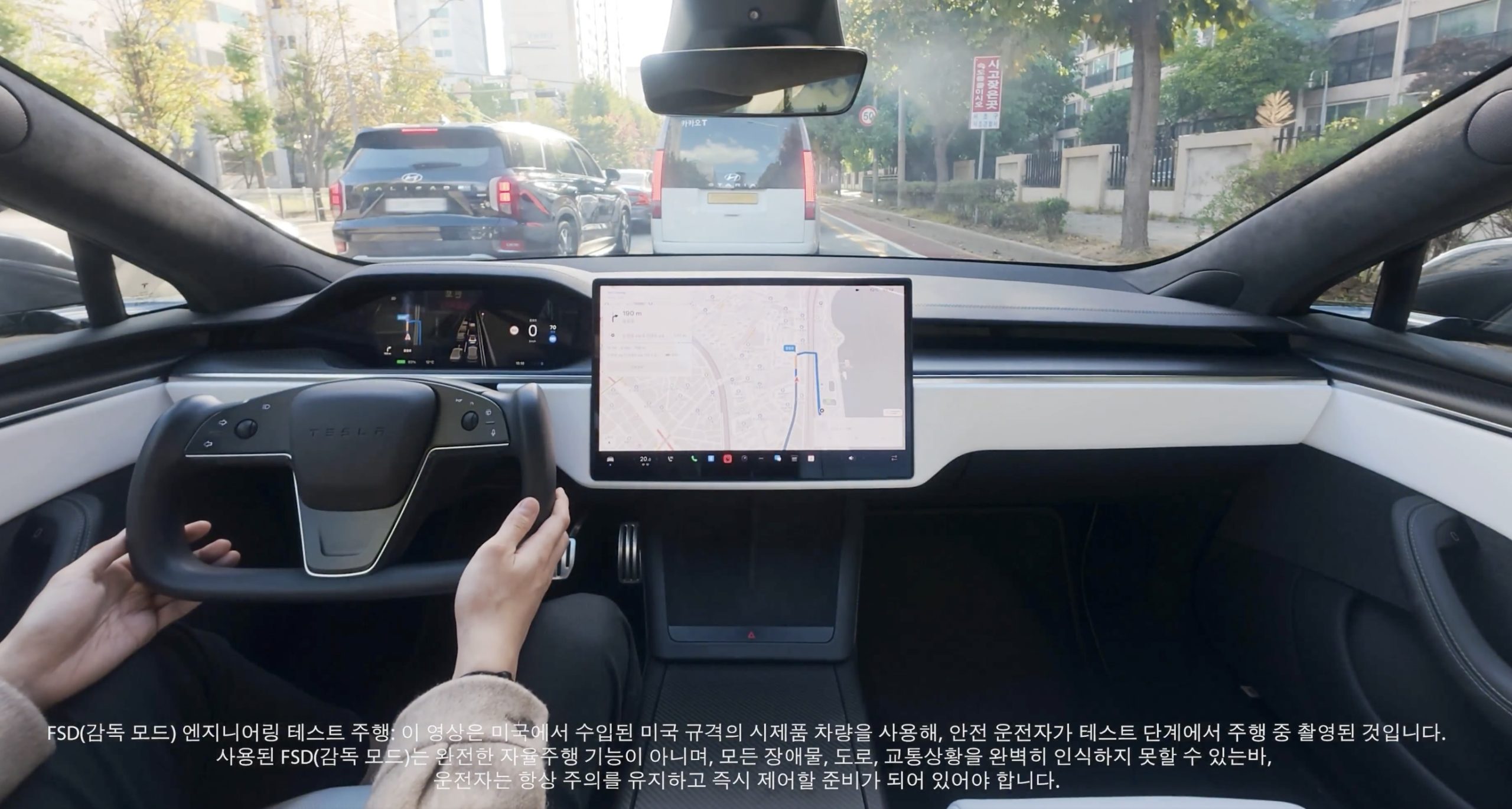
Tesla Full Self-Driving has officially landed in a new country today, its seventh overall after it launched in both Australia and New Zealand earlier this year.
On Sunday, Tesla owners in South Korea reported that the company’s Full Self-Driving (Supervised) had started arriving in their vehicles. Owners reported that it was v14.1.4, which is not the latest version available in other countries, but is one of the most recent releases Tesla has deployed to drivers:
From 6 to 7
Tesla Full Self-Driving has launched in South Korea; the 7th country to have FSD https://t.co/X6gm1SyoxV
— TESLARATI (@Teslarati) November 23, 2025
This marks the seventh country in which Tesla has enabled its Full Self-Driving suite, following the United States and Puerto Rico, Canada, China, Mexico, Australia, and New Zealand.
Tesla launched Full Self-Driving most recently in Australia and New Zealand about three months ago. The expansion is a major breakthrough for the company as it aims to launch Full Self-Driving on a global scale.
However, the company’s biggest challenge thus far has been getting European regulatory agencies to handle the red tape that has inhibited Tesla from launching its semi-autonomous driving suite on the continent. Recently, it admitted that it sees a pathway through Dutch regulatory bodies, which seem to be the most willing to work with Tesla to get FSD in Europe.
Tesla Full Self-Driving appears to be heading to Europe soon
The company said that it has driven over 1 million kilometers safely on European roads across 17 different countries in internal testing. But its path to success will be by “partnering with the Dutch approval authority RDW to gain exemption for the feature. This involves proving compliance with existing regulations (UN-R-171 DCAS) + filing an exemption (EU Article 39) for yet-to-be-regulated behaviors like Level 2 systems off-highway, system-initiated lane changes with hands-off the wheel, etc.”
Perhaps the expansion into Europe will be the biggest challenge for Tesla, but it could also yield major results and advantages for the company moving forward. Tesla said it hopes to have FSD available in Europe sometime early next year.
For now, the expansion in South Korea is the latest win for Tesla and its self-driving efforts. In the U.S., it now turns its focus toward fully autonomous operation, as it works with state agencies to launch Robotaxi outside of Texas, California, and most recently, Arizona.
Elon Musk
Tesla CEO Elon Musk teases insane capabilities of next major FSD update

Tesla CEO Elon Musk teased the insane capabilities of the next major Full Self-Driving update just hours after the company rolled out version 14.2 to owners.
Tesla Full Self-Driving v14.2 had some major improvements from the previous iteration of v14.1.x. We were on v14.1.7, the most advanced configuration of the v14.1 family, before Tesla transitioned us and others to v14.2.
However, Musk has said that the improvements coming in the next major update, which will be v14.3, will be where “the last big piece of the puzzle finally lands.”
14.3 is where the last big piece of the puzzle finally lands
— Elon Musk (@elonmusk) November 21, 2025
There were some major improvements with v14.2, most notably, Tesla seemed to narrow in on the triggers that caused issues with hesitation and brake stabbing in v14.1.x.
One of the most discussed issues with the past rollout was that of brake stabbing, where the vehicle would contemplate proceeding with a route as traffic was coming from other directions.
We experienced it most frequently at intersections, especially four-way stop signs.
Elon Musk hints at when Tesla can fix this FSD complaint with v14
In our review of it yesterday, it was evident that this issue had been resolved, at least to the extent that we had no issues with it in a 62-minute drive, which you can watch here.
Some owners also reported a more relaxed driver monitoring system, which is something Tesla said it was working on as it hopes to allow drivers to text during operation in the coming months. We did not test this, as laws in Pennsylvania prohibit the use of phones at any time due to the new Paul Miller’s Law, which took effect earlier this year.
However, the improvements indicate that Tesla is certainly headed toward a much more sentient FSD experience, so much so that Musk’s language seems to be more indicative of a more relaxed experience in terms of overall supervision from the driver, especially with v14.3.
Musk did not release or discuss a definitive timeline for the release of v14.3, especially as v14.2 just rolled out to Early Access Program (EAP) members yesterday. However, v14.1 rolled out to Tesla owners just a few weeks ago in late 2025. There is the potential that v14.3 could be part of the coming Holiday Update, or potentially in a release of its own before the New Year.
News
Tesla Full Self-Driving v14.2 – Full Review, the Good and the Bad

Tesla rolled out Full Self-Driving version 14.2 yesterday to members of the Early Access Program (EAP). Expectations were high, and Tesla surely delivered.
With the rollout of Tesla FSD v14.2, there were major benchmarks for improvement from the v14.1 suite, which spanned across seven improvements. Our final experience with v14.1 was with v14.1.7, and to be honest, things were good, but it felt like there were a handful of regressions from previous iterations.
While there were improvements in brake stabbing and hesitation, we did experience a few small interventions related to navigation and just overall performance. It was nothing major; there were no critical takeovers that required any major publicity, as they were more or less subjective things that I was not particularly comfortable with. Other drivers might have been more relaxed.
With v14.2 hitting our cars yesterday, there were a handful of things we truly noticed in terms of improvement, most notably the lack of brake stabbing and hesitation, a major complaint with v14.1.x.
However, in a 62-minute drive that was fully recorded, there were a lot of positives, and only one true complaint, which was something we haven’t had issues with in the past.
The Good
Lack of Brake Stabbing and Hesitation
Perhaps the most notable and publicized issue with v14.1.x was the presence of brake stabbing and hesitation. Arriving at intersections was particularly nerve-racking on the previous version simply because of this. At four-way stops, the car would not be assertive enough to take its turn, especially when other vehicles at the same intersection would inch forward or start to move.
This was a major problem.
However, there were no instances of this yesterday on our lengthy drive. It was much more assertive when arriving at these types of scenarios, but was also more patient when FSD knew it was not the car’s turn to proceed.
Can report on v14.2 today there were ZERO instances of break stabbing or hesitation at intersections today
It was a significant improvement from v14.1.x
— TESLARATI (@Teslarati) November 21, 2025
This improvement was the most noticeable throughout the drive, along with fixes in overall smoothness.
Speed Profiles Seem to Be More Reasonable
There were a handful of FSD v14 users who felt as if the loss of a Max Speed setting was a negative. However, these complaints will, in our opinion, begin to subside, especially as things have seemed to be refined quite nicely with v14.2.
Freeway driving is where this is especially noticeable. If it’s traveling too slow, just switch to a faster profile. If it’s too fast, switch to a slower profile. However, the speeds seem to be much more defined with each Speed Profile, which is something that I really find to be a huge advantage. Previously, you could tell the difference in speeds, but not in driving styles. At times, Standard felt a lot like Hurry. Now, you can clearly tell the difference between the two.
It seems as if Tesla made a goal that drivers should be able to tell which Speed Profile is active if it was not shown on the screen. With v14.1.x, this was not necessarily something that could be done. With v14.2, if someone tested me on which Speed Profile was being used, I’m fairly certain I could pick each one.
Better Overall Operation
I felt, at times, especially with v14.1.7, there were some jerky movements. Nothing that was super alarming, but there were times when things just felt a little more finicky than others.
v14.2 feels much smoother overall, with really great decision-making, lane changes that feel second nature, and a great speed of travel. It was a very comfortable ride.
The Bad
Parking
It feels as if there was a slight regression in parking quality, as both times v14.2 pulled into parking spots, I would have felt compelled to adjust manually if I were staying at my destinations. For the sake of testing, at my first destination, I arrived, allowed the car to park, and then left. At the tail-end of testing, I walked inside the store that FSD v14.2 drove me to, so I had to adjust the parking manually.
This was pretty disappointing. Apart from parking at Superchargers, which is always flawless, parking performance is something that needs some attention. The release notes for v14.2. state that parking spot selection and parking quality will improve with future versions.
Any issues with parking on your end? 14.1.7 didn’t have this trouble with parking pic.twitter.com/JPLRO2obUj
— TESLARATI (@Teslarati) November 21, 2025
However, this was truly my only complaint about v14.2.
You can check out our full 62-minute ride-along below:








